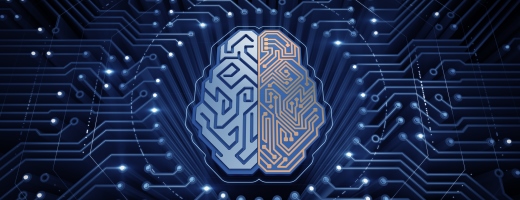DeepMind said it has been able to use its AI to control a nuclear fusion reactor.
The London-based Alphabet subsidiary said it collaborated with the Swiss Plasma Center at EPFL to develop a deep reinforcement learning (RL) system to autonomously discover how to successfully control the coils and plasma in a tokamak.
A tokamak is a doughnut-shaped vacuum surrounded by magnetic coils, that is used to contain a plasma of hydrogen that is hotter than the core of the Sun.
However, the plasmas in these machines are inherently unstable according to DeepMind, making sustaining the process required for nuclear fusion a challenge.
A control system needs to coordinate the tokamak's many magnetic coils according to the company and adjust the voltage on them thousands of times per second to ensure the plasma never touches the walls of the vessel, which would result in heat loss and possibly damage.
In a paper published in science publication Nature, DeepMind described how it successfully controlled nuclear fusion plasma by building and running controllers on the Variable Configuration Tokamak (TCV) in Lausanne, Switzerland.
DeepMind said by using a learning architecture that combines reinforced learning (RL) and a simulated environment, it produced controllers that can both keep the plasma steady and be used to accurately sculpt it into different shapes.
The company said this “plasma sculpting” shows the RL system has successfully controlled the superheated matter and allows scientists to investigate how the plasma reacts under different conditions, improving the understanding of fusion reactors.
DeepMind has announced many new applications of its AI this year.
In February, the BigTech subsidiary announced the creation of a new system, called AlphaCode, which it said can write computer programs at a competitive level using artificial intelligence.
“Similar to progress we’ve seen when applying AI to other scientific domains, our successful demonstration of tokamak control shows the power of AI to accelerate and assist fusion science, and we expect increasing sophistication in the use of AI going forward,” said a spokesperson from DeepMind’s Pulsar Team and the Swiss Plasma Center. “This capability of autonomously creating controllers could be used to design new kinds of tokamaks while simultaneously designing their controllers.
“Our work also points to a bright future for reinforcement learning in the control of complex machines. It’s especially exciting to consider fields where AI could augment human expertise, serving as a tool to discover new and creative approaches for hard real-world problems.”
They added: “We predict reinforcement learning will be a transformative technology for industrial and scientific control applications in the years to come, with applications ranging from energy efficiency to personalised medicine.”
Latest News
-
Universal Music Group partners with Nvidia to create antidote for 'AI slop’
-
East of England Co-op finalises test of digital shelf edge communication platform
-
Barclays makes strategic investment in Ubyx
-
XFusion hires Chinese investment bank in preparation for IPO
-
UK orders X to tackle Grok deepfake abuse as Ofcom steps in
-
Intel bets big on 18a with Panther Lake as rivals tout AI gains
The future-ready CFO: Driving strategic growth and innovation
This National Technology News webinar sponsored by Sage will explore how CFOs can leverage their unique blend of financial acumen, technological savvy, and strategic mindset to foster cross-functional collaboration and shape overall company direction. Attendees will gain insights into breaking down operational silos, aligning goals across departments like IT, operations, HR, and marketing, and utilising technology to enable real-time data sharing and visibility.
The corporate roadmap to payment excellence: Keeping pace with emerging trends to maximise growth opportunities
In today's rapidly evolving finance and accounting landscape, one of the biggest challenges organisations face is attracting and retaining top talent. As automation and AI revolutionise the profession, finance teams require new skillsets centred on analysis, collaboration, and strategic thinking to drive sustainable competitive advantage.
© 2019 Perspective Publishing Privacy & Cookies








Recent Stories